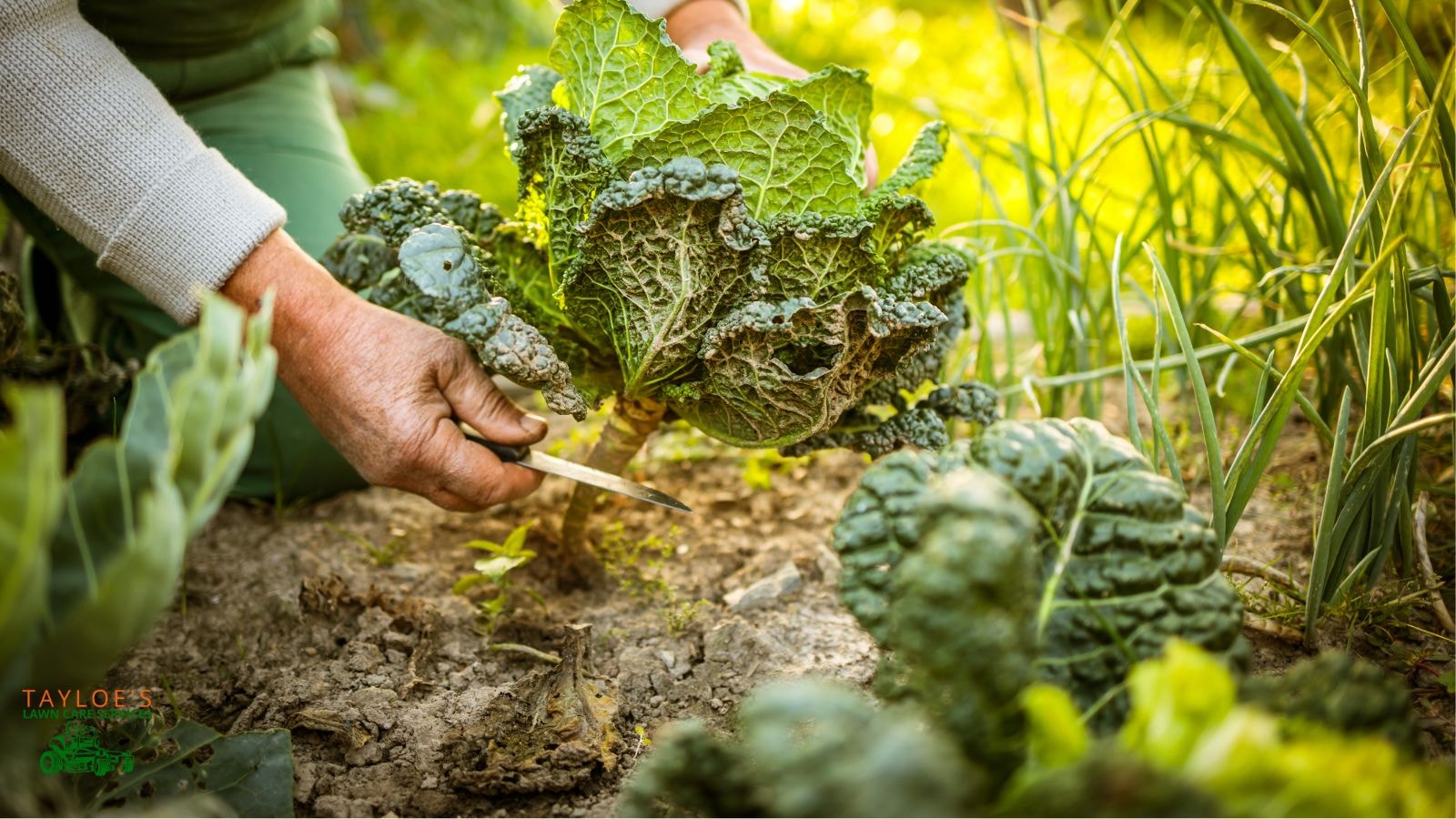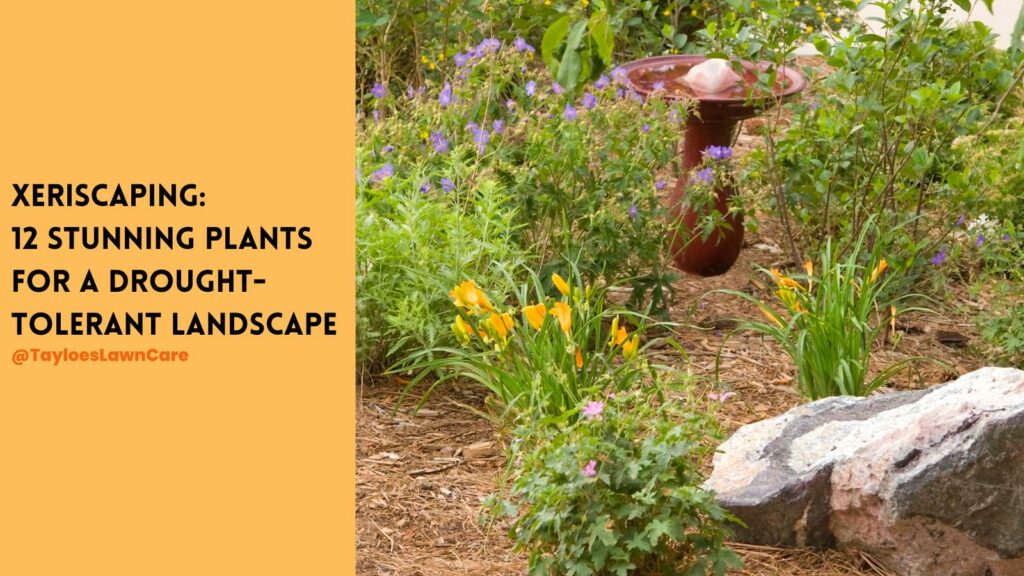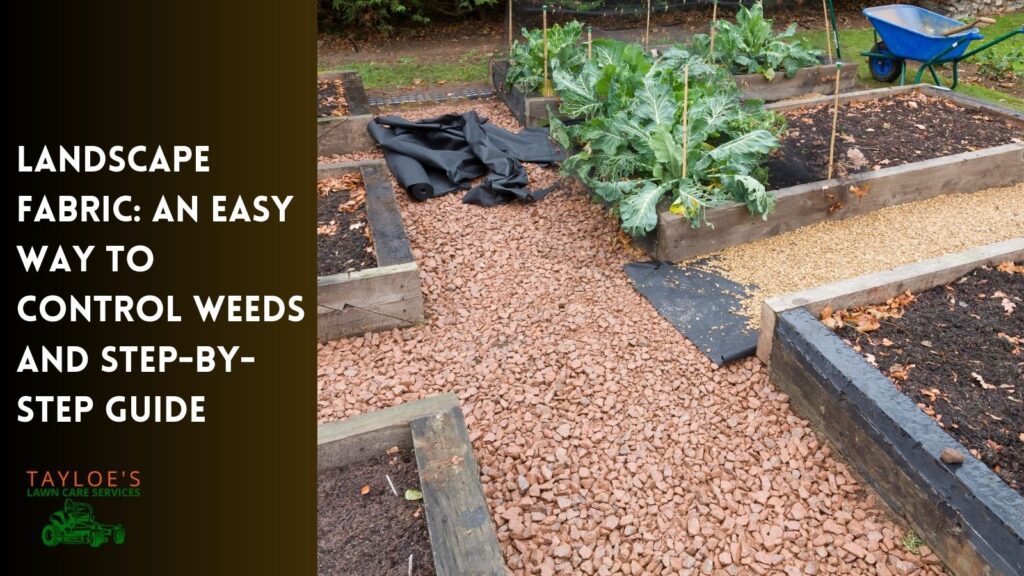Last Updated on: 8th November 2024, 07:03 am

Take advantage of still warm weather in NC to tidy up and prepare for spring.
As fall takes hold in North Carolina, October offers an ideal window for fall garden cleanup and preparing your garden for a bountiful spring. With the mild days and cooler nights, now is the time to complete critical tasks that ensure your garden’s long-term health and vitality. Investing time in these fall chores will set the stage for robust growth when warm days return.
Clearing Garden Beds
A thorough garden bed cleanup is not just a fall chore—it’s a strategic move to safeguard your garden from pests, disease, and other potential problems left over from the summer growing season. While leaf fall adds seasonal beauty, leaving debris unchecked creates the perfect hiding spots for overwintering pests and diseases. Disease prevention is crucial to ensure a healthy garden next year.
Rake up fallen leaves and plant debris, but only add healthy materials to your compost pile. Discard any diseased leaves or plants far from your garden to avoid contamination.
Look closely at your plants for any signs of disease, such as yellowing or mottled leaves. Removing these plants now—including their roots—will prevent future issues.
Once your beds are cleared, it’s time to add nutrients. Spread a layer of organic compost or mulch to help lock in moisture, improve the soil structure, and keep the weeds at bay.
This is also the time to divide your perennials if they’ve outgrown their space. By mid-October, perennials start to slow their growth, making it easier to dig them up and replant them in your garden to fill any bare spots.
Trim back any side shoots growing on berry shrubs— to encourage healthier growth next season.
If your soil seems tired, consider planting cover crops—like rye or soybeans—to protect the soil over the colder season and add organic matter when tilled in next spring.
Planting in the Fall
Wondering what to plant in October? Fall is an excellent time to plant cool-season crops, spring bulbs, hardy perennials, and ground covers, adding vibrant fall color to your landscape. If you’re dreaming of beautiful spring flowers like tulips, daffodils, and hyacinths, now is the time to get them in the ground. These bulbs need winter’s chill to bloom in spring, so plant them in well-drained soil and cover them with mulch for added frost protection.
Many plants in the cool-season crops category, including hardy root vegetables like carrots, radishes, and turnips, thrive in cooler weather and can tolerate light frosts. Just add organic material to help boost soil nutrients for healthy growth.
And if you’re looking to add shrubs or young trees to your garden, this is also the best planting time. The cooler fall weather reduces transplant shock, giving the roots a head start to establish before the winter cold sets in. Mulch and water deeply to ensure the trees are well-prepared for the coming seasons. Don’t miss the chance to plant some garlic for a rewarding summer harvest next year.
Planning and Preparation
October is a crucial month for planning and preparation in the garden. As the weather cools down, it’s essential to consider the next growing season. Here are some tips to help you plan and prepare your garden for the upcoming months:
Review Your Garden’s Performance: Take some time to reflect on your garden’s performance over the past season. Note what worked well and what didn’t. This will help you make informed decisions about what to plant and how to manage your garden in the future.
Plan Your Garden Layout: Plan your garden layout and list the plants you want to include. When selecting plants, consider factors like soil type, sunlight, and moisture levels. This is also a good time to consider rotating crops to prevent soil depletion and pest buildup.
Prepare Your Soil: Add organic matter like compost or manure to prepare your soil for the next growing season. This will help improve soil structure and fertility, ensuring your garden beds are ready for planting season.
Clean and Store Tools: Clean and store your gardening tools and equipment to keep them in good condition and prevent damage. Sharpen blades, oil moving parts, and store them in a dry place to extend their lifespan.
Fall Garden Maintenance Tips
Weeding: Fall is your final chance to eliminate weed growth before winter. Weeds left to survive will return more robust in the subsequent years, competing for nutrients and space. Take advantage of the softer soil after winter rains to pull weeds by the roots. Focus on critical areas around berry bushes to ensure your plants have a clear path to thrive in the next planting season.
Mulching: Mulching is crucial for winter protection. A thick layer insulates plant roots, retains moisture, and prevents soil erosion. Organic mulch also enriches the soil as it decomposes. Mulch around sensitive plants like tuberous begonias and remove spent flowers to prevent rot and powdery mildew. Elevate containers with pot feet for proper drainage in wet conditions.
Watering: Even as temperatures drop, consistent watering remains vital. Newly planted perennials need deep watering to develop strong roots that survive winter. Water plants thoroughly until the ground freezes to prevent roots break due to dehydration.
Pest control: As it gets colder, pests and other wildlife will search for shelter in your garden. Inspect your plants regularly for signs of pest activity. Then, apply organic pest controls like neem oil, insecticidal soap, or introduce beneficial insects like ladybugs. Be sure to discard any diseased foliage that could attract other pests over the colder months.
Protecting Perennial Plants & Prepping for Indoor Gardening
To protect your perennials from freezing weather, apply a thick layer of mulch around their roots. For extra protection, you can also use cold frames or a row cover.
If you’re into indoor plants, now is the time to bring your tropical plants inside before the first frost. Inspect them thoroughly for pests, clean them, and place them near grow lights to provide the necessary light for continued growth through winter. This will allow you to enjoy greenery indoors while protecting your plants from the cold.
Most herbs can also be moved indoors for the winter. Placing them in a cool area with adequate light will keep them growing so you can enjoy fresh herbs year-round.
Pest Monitoring and Management
As the weather cools down, pests like rodents, slugs, and snails can become more active in the garden. Here are some tips for monitoring and managing pests in your garden:
Monitor for Pest Activity: Keep an eye out for signs of pest activity, such as holes in leaves or stems, or droppings on the soil. Regularly inspect your garden beds and plant debris for any indications of pests.
Use Physical Barriers: Physical barriers like copper tape or crushed eggshells can deter slugs and snails from damaging your plants. These barriers create an uncomfortable surface that pests avoid.
Set Traps for Rodents: Rodents can be a significant problem in the fall. Set humane mouse traps or bait stations to control their population. Place traps near areas where you’ve noticed activity.
Employ Organic Pest Control: Use organic pest control methods like neem oil or insecticidal soap to manage infestations. Introducing beneficial insects, such as ladybugs, can also help keep pest populations in check.
Maintain Garden Cleanliness: Keep your garden clean and free of debris, which can attract pests. Regularly remove fallen leaves and plant debris to reduce pests’ hiding spots.
Fruit and Berry Care
October is a crucial time to prepare your fruit trees for the chilly weather.
Prune apple and pear trees to remove damaged branches and encourage healthy spring growth.
Clear fallen fruit and leaves to protect your garden’s health.
Apply compost or mulch around the base to retain moisture and insulate roots, but keep it a few inches from the trunk to avoid rot.
Inspect for pests or disease and address issues promptly.
Now is also an ideal time to plant new fruit trees like citrus trees.
Harvest Your Warm-Season Vegetables
With frost just around the corner, it’s crucial to finish harvesting your warm-season vegetables like green beans, tomatoes, corn, and sweet potatoes. These crops have finished producing for the season and won’t survive the cold. If you’ve been growing apples, pears, or fall raspberries, they should also be ready for picking by late October.
For any partially ripe or green tomatoes still hanging on the vine, now is the time to harvest them. Even if they don’t ripen fully, they can be used in delicious green tomato recipes, ensuring none of your produce goes to waste.
Crops like potatoes, winter squash, apples, and pears store well for the colder months. Keep them in a cool, dry place for long-term preservation. Carrots and beets can either be left in the ground or stored in a cool, dark location to maintain their freshness through the colder months.
And don’t forget to leave some berries on the bushes for your feathered friends! They rely on these late-season treats during migration. Clean feeders and set out birdseed every few days to keep your winged visitors well-fed as they pass through your garden.
Lawn Care and Maintenance While Gardening in October
October is your last chance to get your lawn in shape before the chilly weather. Overseed dead patches to thicken your lawn and, if needed, seed a new lawn. Keep the soil moist as October can be dry, allowing grass to establish strong roots before the frost.
Apply lime to your soil if it hasn’t been done recently to balance the pH and improve grass growth. Although the prime fertilizing time has passed, you can still apply a granular organic fertilizer to boost your lawn’s winter resilience. Don’t let fallen foliage smother your grass—rake them up to prevent disease and allow sunlight to reach your lawn. For garden beds, leave fallen leaves as natural mulch to protect plants and enrich the soil.
Winter Preparation
As the weather gets colder, it’s essential to prepare your garden for the winter months. Here are some tips to help you get your garden ready for winter:
Mulch Your Garden Beds: Mulch your garden beds to protect the soil from freezing temperatures and prevent erosion. A thick layer of mulch insulates plant roots and retains moisture, ensuring your plants are well-protected.
Bring Tropical Plants Indoors: Tropical plants are sensitive to frost and need to be brought indoors before the first frost. Inspect them thoroughly for pests, clean them, and place them near grow lights to provide the necessary light for continued growth through winter.
Protect Young Trees and Shrubs: Young trees and shrubs are vulnerable to wind and frost damage. Wrap them in burlap or use anti-desiccant sprays to protect them from harsh winter conditions.
Clean and Store Cold Frames and Greenhouses: Clean and store your cold frames and greenhouses to keep them in good condition and prevent damage. This will ensure they are ready for use when needed.
Plan for Winter Interest: Plan for winter interest in your garden by planting bulbs or hardy perennials that will provide color and texture during the cold months. This will keep your garden looking vibrant even in the winter.
By following these October gardening tips and tasks, you can ensure your garden is well-prepared for the colder months and set the stage for a successful growing season next year.
The Busiest Planting Season Is Over, but Gardening in October Is a Must
Though the summer growing season has ended, October is filled with opportunities to prepare for next year’s garden. Whether you’re cleaning up garden beds, planting new plants, or transitioning to indoor planting, each task you complete now will pay off with a flourishing garden come spring. By following these October tips, you can ensure your garden stays healthy and vibrant for next year—and find more inspiration to carry through the colder months ahead.
Need help with your fall gardening in October? Call or text 252.287.3376 to book our services.
Author Profile

- Maureen Abuor
- Maureen Abuor is a professional content marketing strategist and SEO strategist, with particular knowlege of creating landscaping and gardening content that informs and delights her audience. When she's not working, she's a busy mother of three precious little ones and child of God.
Latest entries
 Lawn CareApril 29, 2025Best shady area grass seed for Eastern NC
Lawn CareApril 29, 2025Best shady area grass seed for Eastern NC GardeningApril 15, 2025How do I make organic soil for the garden?
GardeningApril 15, 2025How do I make organic soil for the garden? Flower GardenMarch 7, 2025What are wave petunias?
Flower GardenMarch 7, 2025What are wave petunias? Flower GardenMarch 3, 202520 Full-sun annuals for your spring and summer garden
Flower GardenMarch 3, 202520 Full-sun annuals for your spring and summer garden









